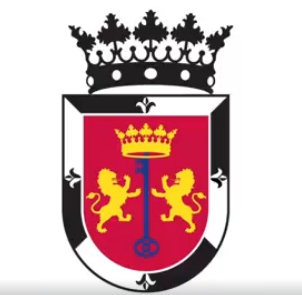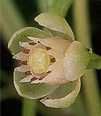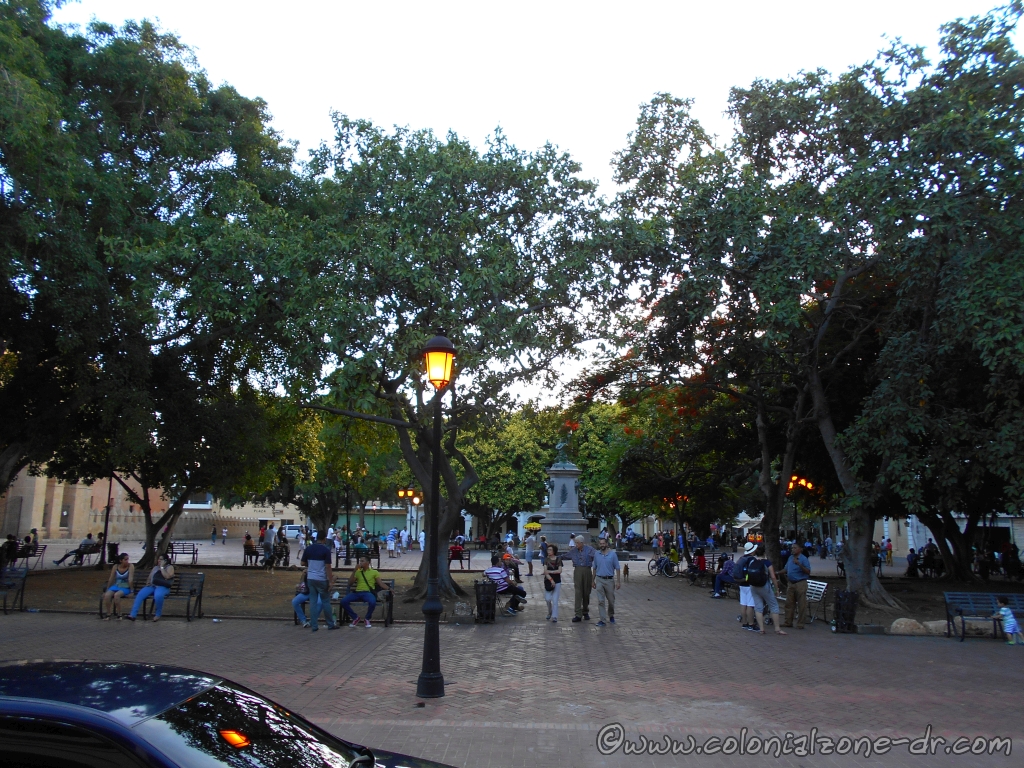National and Patriotic Symbols of Dominican Republic
Descriptions of the national symbols and patriotic items that represent the country and the people of the Dominican Republic.
The Flag of The Dominican Republic | The Dominican Flag Coat of Arms (Shield) | The Constitution of the Dominican Republic pertaining to the Flag and Shield states: | The Shield of Santo Domingo | National Stone | National Music | National Flower | National Tree | National Bird

The Flag of The Dominican Republic / La Bandera de la República Dominicana
“The flag is the most sublime symbol of freedom and national sovereignty”
The Dominican Republic flag was officially adopted on November 6, 1844.
The blue and red are from the flag of Haiti, which once controlled the Dominican Republic. The white cross is a symbol of faith.
The flag was made by four women. María Trinidad Sánchez, María de Jesús Pina, Isabel Sosa and Concepción Bona.
The colors of the flag have very special meanings. Rojo bermellón / vermilion red represents the blood shed by the liberators and heroes of the fatherland. Azul Ultramar / ultramarine blue represents ideals of progress and liberty and that God protects the Dominican nation. The white cross is the symbol of the struggle for a free homeland, peace, the sacrifice and unity among all the Dominican people.
Modern descriptions of the colors state that the blue represents the sky. Red is the fire and bloodshed by the patriots and people in the struggle for freedom. White represents dignity, the peaceful character of the Dominicans and their dedication to peace.
The Escudo or Coat of Arms is centrally located in the white cross. The Dominican Republic flag is the only flag in the world with a symbol of a bible on it.
The merchant ensign flag is the same as the National Flag without the coat of arms and this flag is considered to be the civil flag.

What is the pledge to the flag? Do you know the Dominican Republic National Anthem Quisqueyanos Valientes?
Did you know?
The Flag of The Dominican Republic was aboard the U.S. space shuttle in 2006. U.S. Rep. Jose E. Serrano asked for this to happen to thank the over 100,000 Dominican constituents living in the Bronx district of New York, USA. The official announcement was made Monday 22, 2006.
After the flag gets its ride on the shuttle, where no Dominican has ever been, the flag will be on display at Eugenio María de Hostos Community College located in the South Bronx, New York City. This college, named for Puerto Rican independence advocate Eugenio Maria de Hostos (he buried in the Panteón Nacional of Dominican Republic), had a special ceremony for this permanent exhibition. This is a big honor for the Dominican people as a whole. It shows that the USA recognizes the contributions that the people of the Dominican Republic have given to the United States.
The Dominican Flag Coat of Arms (Shield) / El Escudo Dominicano

/ Dominican Republic Coat of Arms 2010. The new Coat of Arms adopted by constitutional law in 2010 with the bottom red ribbon flowing upward

*There have been at least 14 different shields that have been used on the Dominican Republic flag in the past. Casimiro N. De Moya designed the current shield. It was issued by the government of Monseñor Nouel and was adopted as the official shield in 1913.
*In 2010 the constitution was amended to make a rule on the form of the coat of arms as before no definite law existed. Article 32 (written below in Spanish with my English translation) states the bottom red ribbon faces upward. Thus many of the flags center shields are incorrect because their vermilion ribbon faces downward. You will notice that Parque Independencia coat of arms, as with many of the escudos in the country, is an old version of the coat of arms. Thanks Alexis for the updated information.
*The escudo has the same colors as the flag.
*The Bible is the center of the escudo and is open to the Gospel of St. John, Chapter Eight, Verse Thirty-Two (John 8:32) with a golden cross floating above.
*There are two empty spears and four others with the national flags. These four flags do not have the shield on them. These spears, or flagpoles, are located on either side of the central bible. (*I am trying to research as to exactly why there are six spears or poles and what they represent. When I find out if there is a reason I’ll add it)
*There is a laurel branch on the left side of the shield that represents immortality.
*The palm branch on the right represents Liberty.
*This is topped by a blue ribbon that symbolizes glory with the Trinitarian motto: DIOS, PATRIA, LIBERTAD / “God, Fatherland and Liberty (Freedom)”.
*The bottom ribbon is vermilion red with the words: Republica Dominicana (note that they did not use the “ú” in the word “República”)

Complete information about the flag in Spanish.
Here’s a link to see the banners of the Political Parties in the Dominican Republic
The Constitution of the Dominican Republic pertaining to the Flag and Shield states:
CONSTITUCION POLITICA DE LA REPBULICA DOMINICANA DE 2002
TITULO XII
DISPOSICIONES GENERALES Artículos de la Constitución (updated 5/2012)
Artículos 32 (el artículo 32 modificado 2010) – El Escudo Nacional tiene los mismos colores de la Bandera Nacional dispuestos en igual forma. Lleva en el centro la Biblia abierta en el Evangelio de San Juan, capítulo 8, versículo 32, y encima una cruz, los cuales surgen de un trofeo integrado por dos lanzas y cuatro banderas nacionales sin escudo, dispuestas a ambos lados; lleva un ramo de laurel del lado izquierdo y uno de palma al lado derecho. Está coronado por una cinta azul ultramar en la cual se lee el lema “Dios, Patria y Libertad”. En la base hay otra cinta de color rojo bermellón cuyos extremos se orientan hacia arriba con las palabras “República Dominicana”. La forma del Escudo Nacional es de un cuadrilongo, con los ángulos superiores salientes y los inferiores redondeados, el centro de cuya base termina en punta, y está dispuesto en forma tal que resulte un cuadrado perfecto al trazar una línea horizontal que una las dos verticales del cuadrilongo desde donde comienzan los ángulos inferiores.
Rough translation (article 32 amended in 2010:The National Shield has the same colors as the National Flag arranged in the same way. The center Bible is opened to the Gospel of St. John, Chapter Eight, Verse Thirty-Two, with a cross above it that arises from a trophy composed of two lances and four national flags without a shield, arranged on both sides; a laurel branch takes the left side and a palm takes the right. It is topped by an ultramarine blue ribbon that reads the motto “God, Fatherland and Liberty”. On the base there is another red vermilion ribbon whose ends are directed upwards, reading the words “República Dominicana”. The shape of the national emblem is rectangular, with rounded corners protruding on the upper and lower points, the center of whose base is tapered, and is arranged so that is a perfect square by drawing a horizontal line joining the two vertical the rectangular from the bottom corners.)
ART. 95.- La bandera nacional se compone de los colores azul ultramar y rojo bermellón, en cuarteles alternados, colocados de tal modo que el azul quede hacia la parte superior del asta, separados por una cruz blanca del ancho de la mitad de la altura de un cuartel y que lleve en el centro el escudo de armas de la República. La bandera mercante es la misma que la nacional sin escudo.
Rough translation (article 95: The national flag is made up of the colors ultramarine blue and red vermilion, in alternation, separated into quarters in such a way that the blue one is towards the superior part of the spear, separated by a white cross the width being half the height of the quarter and that it has in the center the shield of arms of the Republic. The merchant flag is the same one that the national without the shield.)
ART. 96.- El escudo de armas de la República tendrá los mismos colores de la bandera nacional dispuestos en igual forma. Llevará en el centro el libro de los Evangelios, abierto, con una cruz encima surgiendo ambos entre un trofeo integrado por dos lanzas y cuatro banderas nacionales, sin escudo, dispuestas a ambos lados; llevará un ramo de laurel del lado izquierdo y uno de palma al lado derecho; estará coronado por una cinta azul ultramar en la cual se leerá el lema: Dios, Patria y Libertad, y en la base habrá otra cinta de color rojo bermellón con las palabras: República Dominicana. La forma del escudo nacional será de un cuadrilongo, con los ángulos superiores salientes y los inferiores redondeados, el centro de cuya base terminará en punta, y estará dispuesto en forma tal que si se traza una línea horizontal que una las dos verticales del cuadrilongo desde donde comienzan los ángulos inferiores, resulte un cuadrado perfecto.
Rough translation (article 96: The shield of arms of the Republic will have the same colors of the national flag in equal form. It will have in the center the book of Gospels, opened, with a cross lifted arising both between a trophy integrated by two lances and four national flags, without shield, arranged on both sides; it will alongside have a branch of laurel on the left side and one of palm on the right side; the top will be crowned by a blue tape in which the motto will be: God, Mother country and Freedom, and in the base another tape of the color red vermilion with the: Dominican Republic. The form of the national shield will be a perfect square, with the salient superior angles and the inferior ones cleared, the center of whose base it will finish at the end, and will be arranged in form so that if a horizontal line is drawn up the two verticals of cuadrilongo from where the inferior angles begin, is a perfect square. )
The Dominican Republic constitution in Spanish.
The Shield of Santo Domingo / Escudo de la Ciudad de Santo Domingo
The Coat of Arms of the City of Santo Domingo / Escudo de Armas de la Ciudad de Santo Domingo.

The Shield of the City of Santo Domingo is an important symbol of pride for the city.
The red background refers to the victory with which the town of Santo Domingo was born. / El fondo rojo referencia a la victoria con la que nació la villa de Santo Domingo.
The crown means dignity and its gold represents nobility, wealth and wisdom. For Santo Domingo also refers to his origin of royalty. / La corona significa dignidad y su oro representa nobleza, riqueza y sabiduría. Para santo domingo también se refiere a su origen de realeza.
Its two yellow lions symbolize energy, sovereignty and dominion. / Sus dos leones amarillos simbolizan energía, soberanía y dominio.
The key means rest and safety, and its blue is the color of the sky. / La llave significa reposo y seguridad, y su color azul se debe al cielo.
The black and white cross is attributed to the name of the city; Santo Domingo de Gazumán / La cruz blanca y negra se le atribute al nombre de la ciudad; Santo Domingo de Gazumán.

This Coat of arms of the city Santo Domingo is located on the interior wall of the Plaza Bartolomé de las Casas in the Colonial Zone.
National Stone / Piedra Nacional
Amber

You can find more information about Dominican Republic amber.
National Music / Música Nacional
Merengue
In 2014 Merengue was declared to be the music of the country. More information about Merengue and some of the musicians who play this newly declared national music.
National Flower / La Flor Nacional
The Rose of Bayahibe / la Rosa de Bayahibe

The flower of the Caoba was the national flower as declared on July 16, 1957 by decree number 2944. There was always confusion about the national tree and flower and now it is clear. On July 12, 2011 la Rosa de Bayahibe was declared to be the National Flower.
Picture of la Rosa de Bayahibe from diariolibre.com
National Tree / Árbol Nacional
The Mahogany (Swietenia mahagoni) / La Caoba

There was always confusion about the national tree and flower and now it is clear. As of July 2011 Dominican Republic finally has their national tree. On July 12, 2011 President Leonel Fernandez passed the Law 146-11, which designates the Mahogany tree to be the new official tree of Dominican Republic.

National Bird / Ave Nacional
Palmchat / Cigua Palmera (Dulus dominicus)

Palm Chat / Ave Nacional – Cigua Palmera
This cute little songbird is found on the island of Hispaniola. It adapts easily to all areas of the country and can be found in abundance.

The Palmchat prefers to be where there are many palm trees (this is where they got their name). They are communal birds. The nests are large, messy and usually found in large groups or communities. The nests can usually be found in the tops of Royal Palms or atop any other high spot when the palm tree is not available.

They lay spotted greyish purple eggs, usually 2 to 4, from March to June.
The song of the Palm Chat is quite loud with constant singing and squawking as they communicate with other birds.
Palmchats are about 8 inches in length. They have an olive-brown creamy color on top and streaked with brown on the bottom. Their backside and the edges of their feathers are a dark yellow-green. They have large yellow bills and rust colored eyes.






